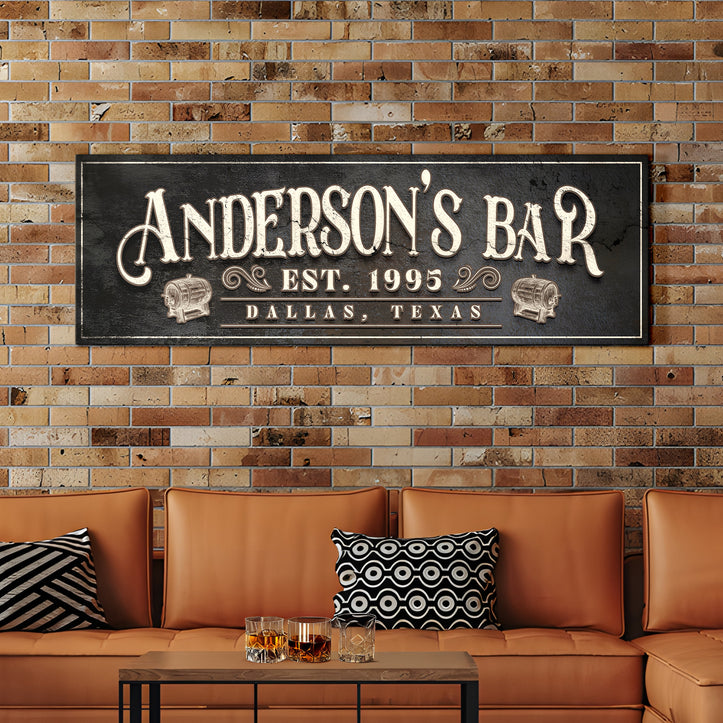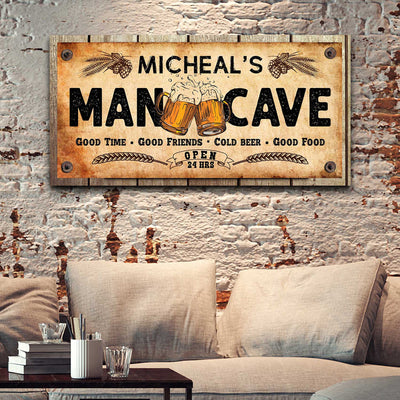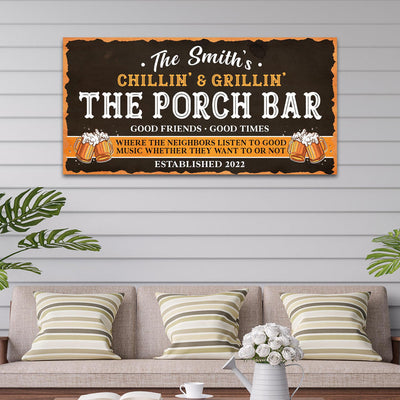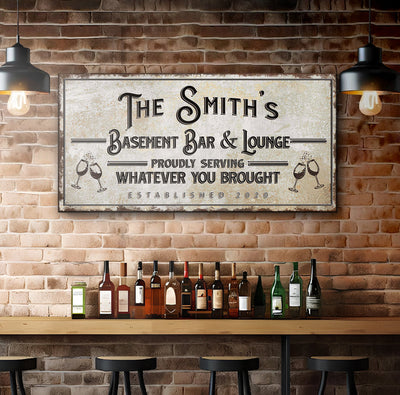A well-designed bar is an integral part of a successful restaurant. It not only enhances the overall ambiance but also contributes to increasing revenue by encouraging guests to stay longer and order more drinks. When designing a restaurant bar, careful consideration should be given to the layout, seating options, decor, and other key elements that can create a pleasant and inviting atmosphere.
When it comes to bar design, there are a few important factors to keep in mind. The layout should prioritize both guest and staff considerations, ensuring a smooth flow of foot traffic and efficient service. The seating options should cater to different preferences and group sizes, providing both comfort and functionality. Additionally, adding decorative elements and custom-branded glassware can elevate the overall aesthetic and enhance the customer experience.
Key Takeaways:
- A well-designed bar can increase revenue by encouraging guests to stay longer and order more drinks.
- The layout should prioritize both guest and staff considerations, ensuring a smooth flow of foot traffic and efficient service.
- Offering a variety of seating options can cater to different preferences and group sizes.
- Adding decorative elements and custom-branded glassware can enhance the overall aesthetic of the bar.
- Strategic bar design and layout can significantly improve the customer experience.
Layout Considerations for Restaurant Bars
When designing a restaurant bar, it's essential to consider various layout considerations that cater to both guest and staff needs. The layout of the bar plays a significant role in creating a functional and inviting space for customers. From bar height and seating options to foot traffic and flexible spaces, each element contributes to a seamless and enjoyable experience. Additionally, staff considerations such as bar depth and backbar space ensure efficiency and comfort for the team.
Guest Considerations
Guest considerations are crucial in designing a restaurant bar. The layout should prioritize guest comfort and accommodate their preferences and group sizes. Key considerations include:
- Bar Height: The bar height should range between 40" and 42" to provide guests with optimal leaning or seating positions.
- Seating Options: Offering a variety of seating options, such as traditional bar stools and high-top tables, caters to different preferences and group sizes.
- Foot Traffic: Avoid setting up the bar in a high-traffic area to ensure a smooth flow of guests and prevent accidents.
- Flexible Spaces: Consider incorporating flex spaces, like an indoor-outdoor bar, to provide additional capacity during favorable weather conditions.
Staff Considerations
Efficient workflow and staff comfort are vital aspects of restaurant bar design. Addressing staff considerations ensures optimal operations and a positive work environment. Here are some staff considerations to keep in mind:
- Bar Depth and Backbar Space: Provide enough space for bartenders to work comfortably and store essential supplies.
- Equipment Layout: Follow general equipment layout rules to streamline the workflow and maximize efficiency.
- Staff Comfort: Consider incorporating cushioned floor mats to support staff comfort during long working hours.
By carefully considering both guest and staff considerations, restaurant owners can create a bar layout that promotes a pleasant customer experience and efficient operations.
Ideas and Tips for Big and Small Restaurant Bar Design
Once the functional aspects of bar design ideas are addressed, it's time to focus on the aesthetics. Creating a visually appealing bar can greatly enhance the overall experience for guests. Let's explore some ideas and tips for designing a memorable restaurant bar.
Choosing the Right Bar Seating Options
The type of bar seating you choose can have a significant impact on guest comfort and turnover rates. Consider offering a mix of seating options to cater to different preferences and group sizes. Traditional bar stools are a popular choice, providing a classic and timeless look. Alternatively, bar-height chairs with backs offer added comfort and support for guests.
Enhancing the Drink Presentation with Glassware and Garnishes
The presentation of drinks plays a crucial role in the overall aesthetic of the bar. Consider investing in custom-branded glassware to elevate the drink experience and showcase your unique brand identity. Statement glassware, such as crystal glasses or specialty cocktail glasses, can add a touch of elegance and sophistication. Don't forget about garnishes! Fresh herbs, colorful fruit slices, and unique garnish combinations can elevate the visual appeal of each drink.
Adding Decorative Elements for Visual Appeal
Creating a visually stunning bar area involves more than just the drinks themselves. Add decorative elements to enhance the ambiance and overall visual appeal. Floral arrangements can bring life and freshness to the bar, while candles create a cozy and intimate atmosphere. Get creative with back bar displays by incorporating unique artwork or showcasing a collection of vintage liquor bottles.
Entertainment and Engagement with Bar Games
Bar games can be a fantastic addition to create a lively and interactive atmosphere. Consider offering classic board games, arcade games, or large-format games like Jenga. These games provide entertainment for guests and encourage them to stay longer, increasing their orders and overall revenue.
Designing a visually appealing restaurant bar involves careful consideration of seating options, glassware and garnishes, decorative elements, and entertainment offerings. By combining these elements, you can create a bar experience that not only satisfies your guests' thirst but also captivates their senses.
With the right blend of functionality and aesthetics, your restaurant bar can become a memorable destination for customers seeking a delightful and immersive drinking experience.
Using the Bar to Improve the Customer Experience
The bar in a restaurant serves as more than just a place to serve drinks. It can actually enhance the overall customer experience. By providing a comfortable and engaging space for waiting, the bar keeps guests occupied and allows them to start a tab while waiting for a table or their dining partners.
Offering bar seating or high-top tables for guests who only want drinks can optimize seating capacity and increase revenue. Additionally, providing a casual alternative to traditional seating, either at the bar or in a lounge area, can cater to different dining preferences while maintaining a welcoming atmosphere.
When customers are in the waiting area, they often feel more relaxed and at ease by having access to a bar. They can socialize, enjoy a drink, and pass the time while waiting for their table. This improves their overall dining experience and can contribute to positive reviews and repeat visits.
Having a dedicated bar area also offers flexibility and versatility, as it can serve both as a waiting area and a casual dining space. Depending on the restaurant's concept and layout, the bar can be designed to accommodate patrons who prefer a more laid-back and casual dining experience. This flexibility attracts a wider range of customers and increases the restaurant's appeal.
Furthermore, offering bar seating or high-top tables provides an additional revenue stream. It allows guests who are solely interested in drinks to have a place to enjoy them comfortably. By optimizing seating capacity and capturing this specific customer segment, the restaurant can maximize its sales potential.
The bar area serves as a multifunctional space that enhances the overall customer experience. Whether it's providing a comfortable waiting area, catering to casual diners, or optimizing seating capacity, utilizing the bar effectively can elevate a restaurant's hospitality and contribute to its success.
Strategic Bar Positioning and Optimal Bar Design
The positioning of the bar within a restaurant plays a crucial role in its overall impact. To ensure maximum visibility and easy access for both seated guests and those standing at the bar, it's essential to strategically place the bar in a central and easily accessible area of the establishment.
When it comes to designing the bar itself, functionality and efficiency should be prioritized. Consider the shape of the bar, whether it's straight, L-shaped, or U-shaped, in order to complement the space and service style of the restaurant.
It's also important to choose a durable and easy-to-clean material for the bar top, as it will endure constant use and spills. Additionally, thoughtful design of workstations and storage within the bar can greatly streamline operations and keep everything organized.
Enhancing the atmosphere of the bar is key to creating a memorable experience for customers. Proper lighting can create a warm and inviting ambiance, while music selection can set the mood and create the desired atmosphere.
Add decorative elements like artwork and plants to further enhance the visual appeal of the bar area. These elements not only contribute to the overall atmosphere but also add a touch of personality and style to the space.
By strategically positioning the bar and implementing an optimal bar design, restaurant owners can create a space that attracts customers and keeps them coming back for more.
Benefits of Strategic Bar Positioning and Optimal Bar Design:
- Enhanced visibility and accessibility for guests
- Improved operational efficiency
- Aesthetic appeal and inviting atmosphere
- Organized and efficient workspace for the bar staff
- Increased customer satisfaction and repeat business
Comparing Different Bar Shapes
|
Bar Shape |
Advantages |
Disadvantages |
|
Straight |
- Provides a linear layout for easy access |
- Limited space for seating and movement |
|
L-Shaped |
- Offers flexibility and additional seating options |
- Requires more space for the bar area |
|
U-Shaped |
- Provides ample seating and space for bartenders |
- Takes up more floor space |
Conclusion
Designing a well-thought-out and visually appealing bar is crucial for the success of a restaurant. By considering layout considerations, adopting creative ideas, and prioritizing the customer experience, restaurant owners can create a bar that not only attracts customers but also maximizes profit and enhances overall hospitality.
Strategic bar positioning and optimal bar design play a key role in creating a successful bar. By carefully planning the bar's layout, including foot traffic flow, bar height, and seating options, owners can ensure that guests have a comfortable and enjoyable experience. Additionally, incorporating atmosphere-enhancing elements such as proper lighting, music selection, and decorative elements can further elevate the bar's ambiance and appeal.
It's important to remember that the bar is more than just a place to serve drinks. It is an extension of the restaurant's hospitality experience. By paying attention to both the functional and aesthetic aspects of the bar, restaurant owners can create a memorable space that leaves a lasting impression on guests. Prioritizing customer satisfaction, profitability, and overall design best practices will contribute to the success of the restaurant bar and ultimately the entire establishment.
FAQ
How can a well-designed bar contribute to a restaurant's success?
A well-designed bar can encourage guests to stay longer, order more drinks, and maximize profits for the restaurant.
What layout considerations should be kept in mind when designing a restaurant bar?
Some important layout considerations include bar height, seating options, foot traffic, and flexible spaces to cater to both guests and staff.
What are some ideas and tips for designing a restaurant bar?
Choosing bar seating options, custom-branded glassware, and adding decorative elements like floral arrangements and creative back bar displays are some ideas and tips for bar design.
How can the bar be used to improve the customer experience?
The bar can keep guests occupied while waiting, accommodate guests who only want drinks, and offer a more casual alternative to traditional seating.
How does strategic bar positioning and optimal bar design impact the restaurant?
Strategic bar positioning and optimal bar design can enhance the overall atmosphere, visibility, and accessibility of the bar, maximizing its impact on guests.





